
Hospital Bed Maintenance: Avoid Costly Repairs!
Implementing proper hospital bed maintenance protocols is essential for extending equipment lifespan, ensuring patient safety, and avoiding expensive emergency repairs. With regular preventive care, healthcare facilities can protect their investment in medical beds while maintaining optimal functionality for both patients and caregivers.
Key Takeaways:
- Regular hospital bed maintenance prevents costly breakdowns and extends equipment life
- Preventive maintenance schedules should include daily, weekly, monthly, and annual checks
- Proper cleaning protocols protect mechanical components while maintaining infection control
- Lubrication, electrical testing, and mechanical inspections are essential maintenance tasks
- Staff training on basic maintenance significantly reduces repair frequency
- Documentation of all maintenance activities is critical for compliance and warranty protection
Why Hospital Bed Maintenance Matters
Hospital bed maintenance directly impacts patient care, staff efficiency, and facility economics. These sophisticated medical devices represent significant investments that, with proper care, should deliver years of reliable service in demanding healthcare environments.
At MedShopDirect, we offer a comprehensive selection of hospital beds designed for durability and reliability. However, even the highest quality electric hospital beds require regular maintenance to perform optimally and reach their expected service life.
Let's explore the essential maintenance practices that protect your investment and ensure your hospital beds continue to function reliably for years to come.
Essential Hospital Bed Maintenance Tasks
A comprehensive hospital bed maintenance program includes several critical components:
Mechanical System Maintenance
Regular inspection and care of mechanical components is fundamental:
- Articulation Joint Lubrication - Applying appropriate lubricants to moving parts
- Caster/Wheel Maintenance - Cleaning debris and checking for wear
- Frame Inspection - Examining welds and connection points for integrity
- Brake System Verification - Testing locking mechanisms for proper engagement
- Headboard/Footboard Attachment - Checking security of removable components
These mechanical maintenance tasks prevent excessive wear while ensuring reliable operation.
Electrical System Care
For fully electric hospital beds, electrical system maintenance is critical:
- Cable Inspection - Checking for fraying, pinching, or damage
- Connection Verification - Ensuring secure attachment of all electrical components
- Control Box Testing - Confirming proper function of main control unit
- Pendant/Control Panel Check - Testing all buttons and displays
- Battery Backup Verification - Confirming emergency power systems function properly
These electrical checks prevent dangerous malfunctions while ensuring consistent performance.
Cleaning as Preventive Maintenance
Proper hospital bed cleaning is a critical component of maintenance:
- Debris Removal - Preventing buildup in mechanical components
- Fluid Intrusion Prevention - Protecting electrical systems from damage
- Appropriate Cleaning Agents - Using manufacturer-approved products
- Mattress Platform Cleaning - Preventing damage to deck surfaces
- Post-Cleaning Inspection - Verifying no moisture remains in critical components
Effective cleaning protocols balance infection control with equipment protection.
Recommended Hospital Bed Maintenance Schedule
Implementing a structured maintenance schedule ensures consistent equipment care:
Daily Maintenance Tasks
Quick daily checks prevent developing problems:
- Visual Inspection - Brief examination for obvious issues
- Function Testing - Basic operation verification
- Cleanliness Check - Ensuring no debris or spills remain
- Cable Management - Proper positioning of electrical cords
- Control Verification - Confirmation of proper pendant operation
These daily tasks take minimal time but catch developing issues early.
Weekly Maintenance Procedures
More thorough weekly examinations include:
- Caster Cleaning - Removing hair and debris from wheels
- Articulation Testing - Full range-of-motion verification
- Brake Function Check - Complete testing of locking mechanisms
- Side Rail Operation - Verification of smooth movement and secure latching
- Scale Calibration - For beds with integrated weighing systems
These weekly procedures identify wear patterns before they become problematic.
Monthly Maintenance Protocols
Comprehensive monthly inspections address developing issues:
- Thorough Lubrication - Application to all moving components
- Battery Testing - Verification of backup power systems
- Electrical System Inspection - Complete check of all cables and connections
- Mattress Examination - Assessment for integrity and cleanliness
- Frame Inspection - Detailed examination of structural components
These monthly protocols prevent most major mechanical failures.
Annual Professional Service
Expert examination ensures continued reliability:
- Comprehensive Electrical Testing - In-depth examination of all systems
- Motor Assessment - Evaluation of drive systems and actuators
- Control System Diagnostics - Advanced testing of electronic components
- Structural Integrity Verification - Detailed assessment of frame and connections
- Preventive Component Replacement - Addressing parts before failure occurs
Annual professional service dramatically extends bed lifespan while reducing costly emergency repairs.
Maintenance for Different Hospital Bed Types
Different bed categories have specific maintenance requirements:
Standard Electric Hospital Bed Maintenance
Basic electric models require focused attention to:
- Motor Function - Regular testing of lift and articulation drives
- Control System Reliability - Verification of all user interfaces
- Cable Routing - Proper positioning to prevent pinching and wear
- Height Adjustment Mechanism - Lubrication and function testing
- Power Connection - Inspection of plugs and receptacles
These maintenance points address the core functions of standard electric beds.
Advanced ICU Bed Maintenance
ICU hospital beds require additional attention to specialized features:
- Advanced Positioning System Verification - Testing of Trendelenburg and specialized positions
- Scale System Calibration - Ensuring accurate weight measurement
- Multiple Control System Integration - Verifying all interfaces function properly
- Enhanced Side Rail Mechanisms - Checking complex movement systems
- Accessory Connection Points - Inspecting mounting systems for equipment
This enhanced maintenance supports the critical functions required in intensive care environments.
Bariatric Bed Special Requirements
Bariatric hospital beds need particular attention to:
- Enhanced Frame Inspection - Checking reinforced structures for integrity
- Higher-Capacity Actuator Assessment - Verifying proper function under load
- Width Expansion Mechanisms - Testing adjustable width features
- Reinforced Brake Systems - Ensuring proper function with higher weights
- Heavy-Duty Caster Maintenance - Inspection of specialized wheel systems
These specialized checks ensure safety and reliability for higher-capacity beds.
Key Components Requiring Regular Maintenance
Certain hospital bed components need particular attention:
Motor and Actuator Maintenance
The drive systems in electric beds require specific care:
- Drive Housing Inspection - Checking for cracks or damage
- Heat Assessment - Monitoring for excessive temperature during operation
- Sound Evaluation - Listening for unusual noises indicating wear
- Movement Testing - Verifying smooth, consistent motion
- Load Testing - Confirming proper function under typical weight
These specialized motor checks prevent costly drive system failures.
Control System Maintenance
Electronic controls benefit from regular attention:
- Button Function Verification - Testing all control inputs
- Display Assessment - Checking for proper function of indicators
- Connection Security - Ensuring tight cable attachments
- Moisture Protection - Verifying seals and barriers remain intact
- Software Updates - Applying any available firmware improvements
These control system checks prevent frustrating operational failures.
Frame and Structural Maintenance
Bed frames require regular structural assessment:
- Weld Inspection - Examining all connection points
- Hinge Lubrication - Maintaining smooth operation of articulation points
- Bolt Tightening - Checking for and addressing loosening fasteners
- Corrosion Assessment - Identifying and addressing any developing rust
- Weight Capacity Verification - Ensuring structural integrity for rated loads
These structural maintenance tasks prevent dangerous failures and extend bed lifespan.
Maintenance Tools and Supplies
Proper hospital bed maintenance requires specific tools and materials:
Essential Maintenance Equipment
Basic maintenance kit components include:
- Appropriate Lubricants - Manufacturer-recommended greases and oils
- Electrical Testing Tools - Multimeters and circuit testers
- Mechanical Tool Set - Wrenches, screwdrivers, and Allen keys
- Cleaning Supplies - Approved sanitizers and cleaning tools
- Diagnostic Equipment - Control system testers if available
These tools support effective preventive maintenance activities.
Recommended Spare Parts Inventory
Maintaining a basic spare parts supply prevents downtime:
- Control Pendants - Replacement user interfaces
- Power Cords - Extra cables for immediate replacement
- Common Fasteners - Screws, bolts, and other connection hardware
- Casters - Replacement wheels for quick repair
- Side Rail Components - Latches and attachment hardware
This modest parts inventory can prevent extended bed unavailability.
Staff Training for Basic Maintenance
Empowering staff with maintenance skills improves outcomes:
Maintenance Training Components
Effective staff education includes:
- Visual Inspection Skills - Identifying developing problems
- Basic Troubleshooting - Diagnosing common issues
- Cleaning Best Practices - Proper sanitization without component damage
- Simple Repairs - Addressing minor problems safely
- Documentation Requirements - Proper recording of all maintenance activities
This staff knowledge significantly reduces maintenance-related bed downtime.
Creating Effective Maintenance Checklists
Standardized checklists improve consistency:
- Role-Specific Tasks - Clear responsibilities for each team member
- Frequency Guidelines - When each check should be performed
- Pass/Fail Criteria - Clear standards for acceptable condition
- Escalation Pathways - When to involve specialized maintenance staff
- Documentation Systems - Records keeping for completed checks
These structured approaches ensure comprehensive maintenance coverage.
Addressing Common Hospital Bed Problems
Proactive knowledge prevents extended equipment downtime:
Motor and Actuator Issues
Common drive system problems include:
- Inconsistent Movement - Often indicates lubrication needs or obstruction
- Unusual Noises - May signal internal wear requiring attention
- Failure to Hold Position - Typically indicates brake or lock problems
- Overheating - Can signal impending motor failure
- Intermittent Function - Often related to electrical connection issues
Early intervention with these symptoms prevents complete system failure.
Control System Failures
Electronic control problems frequently include:
- Unresponsive Buttons - May indicate connection or control board issues
- Erratic Operation - Often signals control system problems
- Display Failures - Typically related to electronic board issues
- Pendant Damage - Physical damage to user controls
- System Reset Needs - Electronic controls requiring reinitialization
Addressing these issues promptly prevents larger system failures.
Mechanical Component Wear
Common mechanical failures include:
- Brake Failures - Typically from debris or component wear
- Side Rail Malfunctions - Usually related to latch wear or alignment
- Caster Problems - Often caused by debris or bearing failure
- Frame Connection Failures - Typically from loose fasteners or weld stress
- Headboard/Footboard Attachment Issues - Usually from latch wear or damage
Regular inspection identifies these issues before they affect patient safety.
When to Call Professional Service Technicians
Some maintenance issues require specialized expertise:
Recognizing Major Maintenance Needs
Signs that professional service is needed include:
- Electrical System Failures - Any significant power or control issues
- Structural Damage - Frame problems affecting integrity
- Persistent Motor Problems - Drive systems that continue to malfunction
- Scale Calibration Issues - Weight system inaccuracies
- Multiple System Failures - Problems affecting several bed functions
These situations warrant immediate professional attention.
Finding Qualified Service Providers
Quality maintenance partners should have:
- Manufacturer Certification - Training on specific bed models
- Healthcare Experience - Understanding of clinical environments
- Responsive Service - Quick attention to critical equipment
- Preventive Programs - Proactive maintenance offerings
- Parts Availability - Access to necessary components
Establishing relationships with qualified providers before emergencies ensures faster service.
Maintenance Costs vs. Replacement Decisions
Strategic thinking optimizes equipment expenditures:
Calculating Maintenance ROI
Evaluating maintenance value considers:
- Annual Maintenance Costs - Total expenditure on preventive and emergency service
- Remaining Useful Life - Estimated additional years of service
- Replacement Expense - Cost of new equivalent equipment
- Downtime Impact - Operational effects of unavailable equipment
- Technological Advances - Benefits of newer models
This analysis supports informed decisions about continued maintenance versus replacement.
Signs That Replacement May Be More Economical
Indicators that new equipment may be warranted include:
- Escalating Repair Frequency - Increasing breakdown incidents
- Parts Availability Issues - Difficulty obtaining necessary components
- Significant Functional Limitations - Lacking features now considered standard
- Safety Concerns - Emerging issues affecting patient wellbeing
- Excessive Cumulative Costs - Maintenance expenses approaching replacement value
When maintaining hospital beds for sale becomes uneconomical, exploring new models often provides better long-term value.
Hospital Beds for Sale
Documentation and Compliance Requirements
Proper records protect both patients and facilities:
Maintenance Record Requirements
Essential documentation includes:
- Scheduled Maintenance Records - Documentation of all preventive activities
- Repair Documentation - Details of all corrective actions
- Inspection Results - Findings from regular examinations
- Staff Training Records - Verification of maintenance education
- Manufacturer Communications - Records of any advisories or bulletins
These records support both regulatory compliance and warranty protection.
Regulatory Compliance Considerations
Maintenance documentation supports:
- Joint Commission Requirements - Meeting accreditation standards
- Manufacturer Warranty Compliance - Protecting equipment guarantees
- Risk Management Protocols - Demonstrating appropriate safety measures
- Insurance Documentation - Supporting coverage requirements
- Internal Quality Assurance - Verifying proper equipment management
Proper documentation protects facilities during regulatory reviews and adverse events.
Special Maintenance Considerations
Certain situations require specialized approaches:
Maintenance for Specialized Bed Types
Unique beds have specific requirements:
- Psychiatric Beds - Special attention to anti-ligature features
- Birthing Beds - Focus on specialized positioning systems
- Surgical Hospital Beds - Enhanced stability system verification
- Low Hospital Beds - Extra attention to floor-proximity mechanisms
- Home Hospital Beds - Residential environment considerations
These specialized beds require maintenance protocols tailored to their unique features.
Maintenance During Patient Occupancy
When beds cannot be removed from service:
- Abbreviated Protocols - Essential checks that don't disturb patients
- Strategic Timing - Conducting maintenance during patient activities
- Limited Component Access - Focusing on accessible systems
- Patient Safety Prioritization - Ensuring all activities protect occupants
- Communication Coordination - Working with nursing staff to minimize disruption
These adapted approaches maintain equipment while respecting patient needs.
Creating a Hospital Bed Maintenance Program
Implementing a structured program ensures consistent care:
Program Development Steps
Effective maintenance programs include:
- Inventory Assessment - Cataloging all beds with specifications
- Manufacturer Guidance Integration - Incorporating recommended protocols
- Staff Responsibility Assignment - Defining maintenance roles
- Documentation System Creation - Establishing record-keeping processes
- Training Implementation - Educating all relevant personnel
This structured approach ensures comprehensive equipment care.
Implementation Best Practices
Successful programs typically include:
- Visible Schedules - Accessible maintenance calendars
- Clear Accountability - Specific responsibility assignments
- User-Friendly Documentation - Simple record-keeping systems
- Regular Compliance Audits - Verification of program adherence
- Continuous Improvement Processes - Ongoing refinement of protocols
These best practices support sustainable maintenance programs that protect equipment investments.
Extending Hospital Bed Lifespan Through Maintenance
Strategic maintenance dramatically extends equipment service life:
Preventive vs. Reactive Maintenance Economics
Comparing maintenance approaches reveals:
- Preventive Costs - Typically 25-30% of reactive maintenance expenses
- Equipment Lifespan Effects - Often doubles useful service life
- Downtime Reduction - Typically reduces unavailability by 70-75%
- Budget Predictability - Converts unexpected expenses to planned costs
- Staff Efficiency Impact - Reduces disruption from emergency repairs
These economic benefits make preventive maintenance the clear financial choice.
Real-World Maintenance Success Stories
Case studies demonstrate maintenance value:
- Long-Term Care Facility: Implemented comprehensive program, extended average bed lifespan from 8 to 14 years
- Regional Hospital: Reduced emergency repair costs by 65% through scheduled maintenance
- Home Healthcare Provider: Cut bed-related service calls by 70% through staff training
- Rehabilitation Center: Decreased bed downtime by 80% with preventive protocols
- Surgical Center: Eliminated intraoperative bed failures through enhanced maintenance
These examples illustrate the substantial benefits of proper hospital bed maintenance.
Selecting Beds with Maintenance in Mind
New equipment selection should consider maintenance factors:
Maintenance-Friendly Design Features
When evaluating new beds, look for:
- Modular Construction - Allows component replacement without complete disassembly
- Accessible Lubrication Points - Easy application of required lubricants
- Quality Materials - Superior components that resist wear
- Simplified Mechanical Systems - Less complexity means fewer failure points
- Robust Electrical Connections - Secure systems that resist damage
For facilities caring for senior patients, beds designed for elderly care often incorporate these maintenance-friendly features.
Warranty and Service Contract Considerations
Evaluate support programs based on:
- Coverage Duration - Longer protection periods
- Included Services - Preventive maintenance inclusion
- Response Time Guarantees - Rapid attention to critical issues
- Parts Availability - Guaranteed component access
- Loaner Equipment - Temporary replacements during extended repairs
These support programs enhance the value proposition of quality hospital beds.
Conclusion: The Economics of Hospital Bed Maintenance
Implementing comprehensive hospital bed maintenance protocols represents one of the most cost-effective investments healthcare facilities can make. The combination of extended equipment life, reduced emergency repairs, improved reliability, and enhanced patient safety delivers exceptional return on the modest resources required for preventive maintenance.
For facilities seeking to maximize the value of their hospital bed investment, developing and consistently implementing a structured maintenance program should be considered an essential operational priority. The resulting benefits—both financial and clinical—far outweigh the organizational effort required.
For guidance on selecting hospital beds designed for easy maintenance and exceptional durability, explore our comprehensive collection of quality medical beds designed for long-term reliability. Our healthcare equipment specialists can provide detailed information on maintenance-friendly features that protect your investment while ensuring years of reliable service.






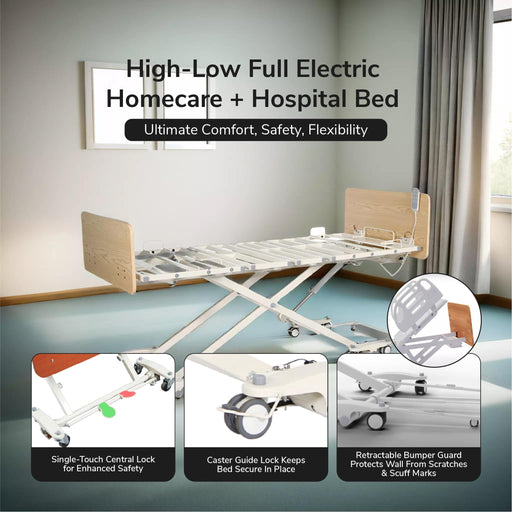
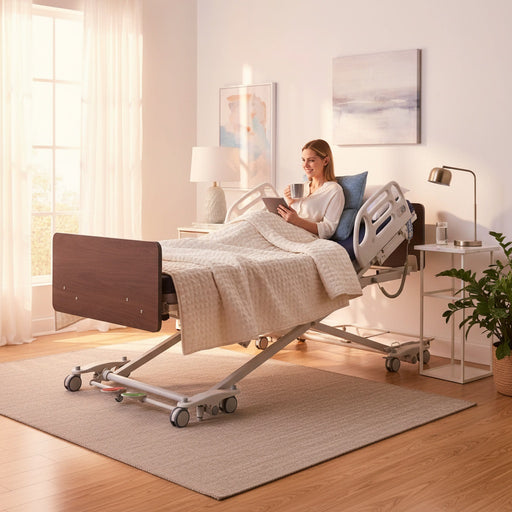
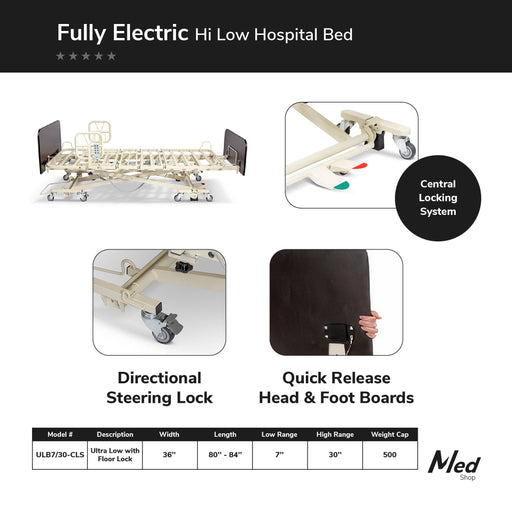
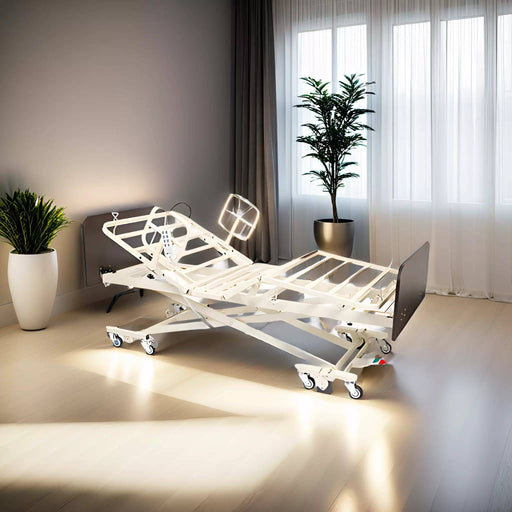


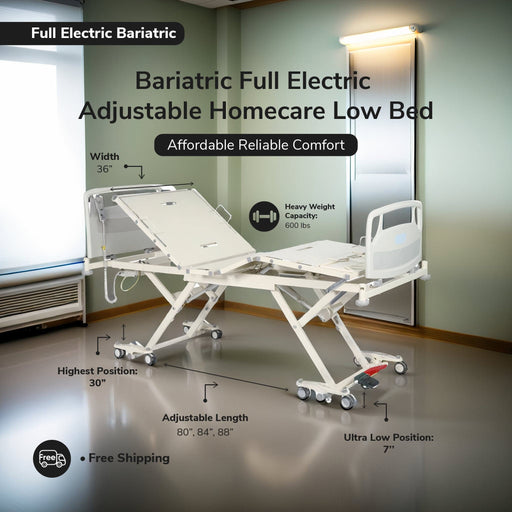
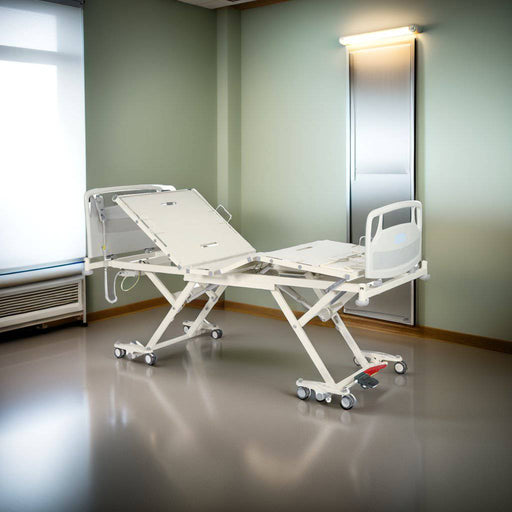
Leave a comment